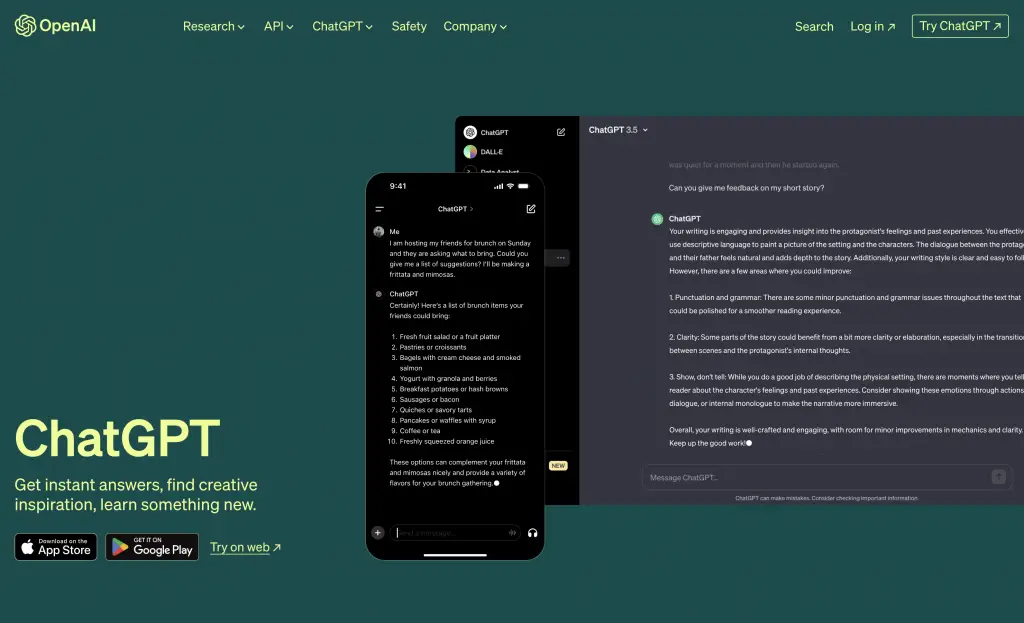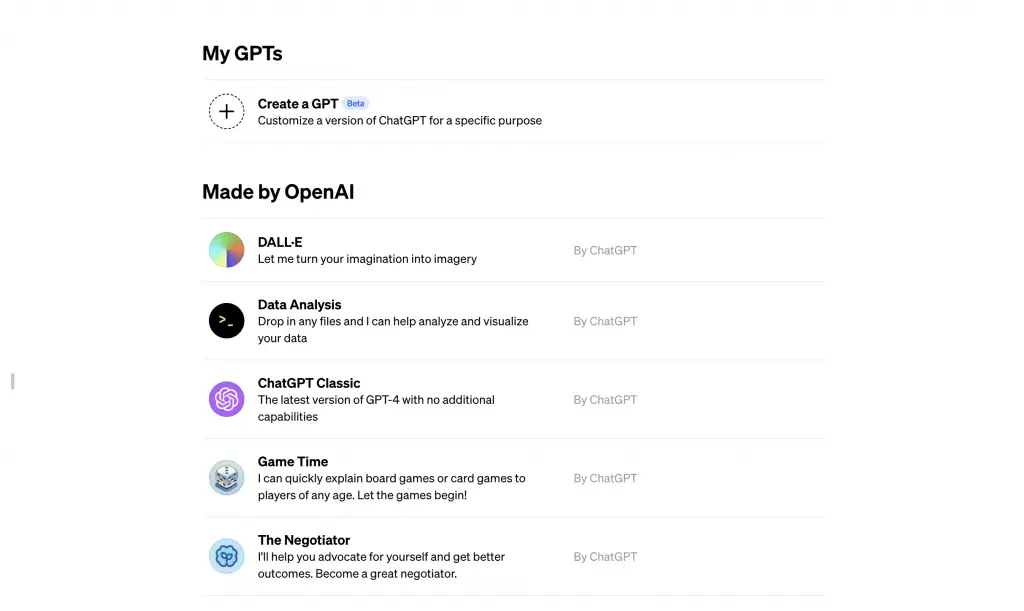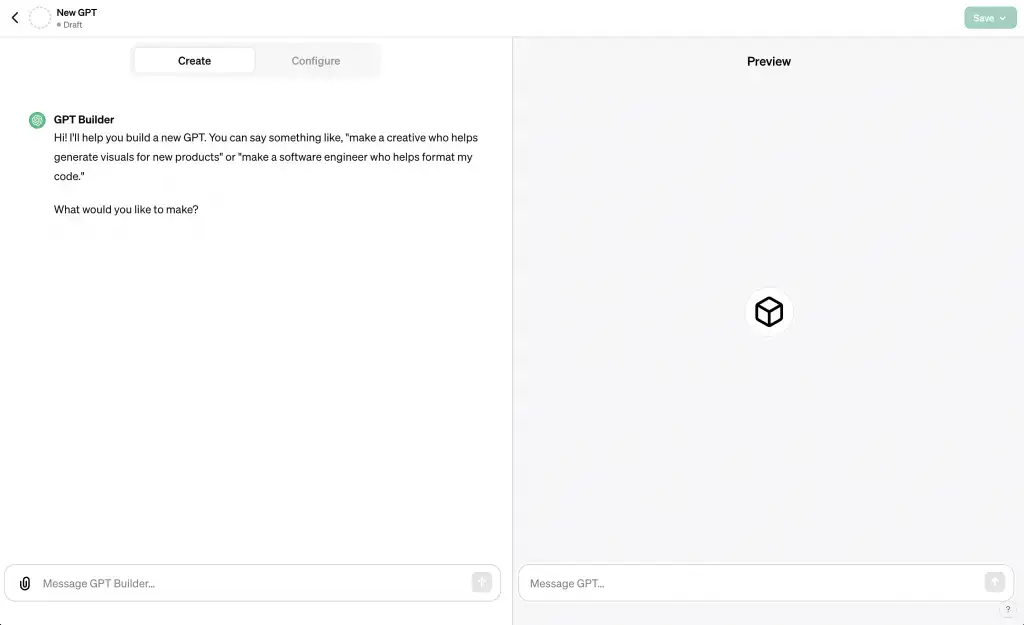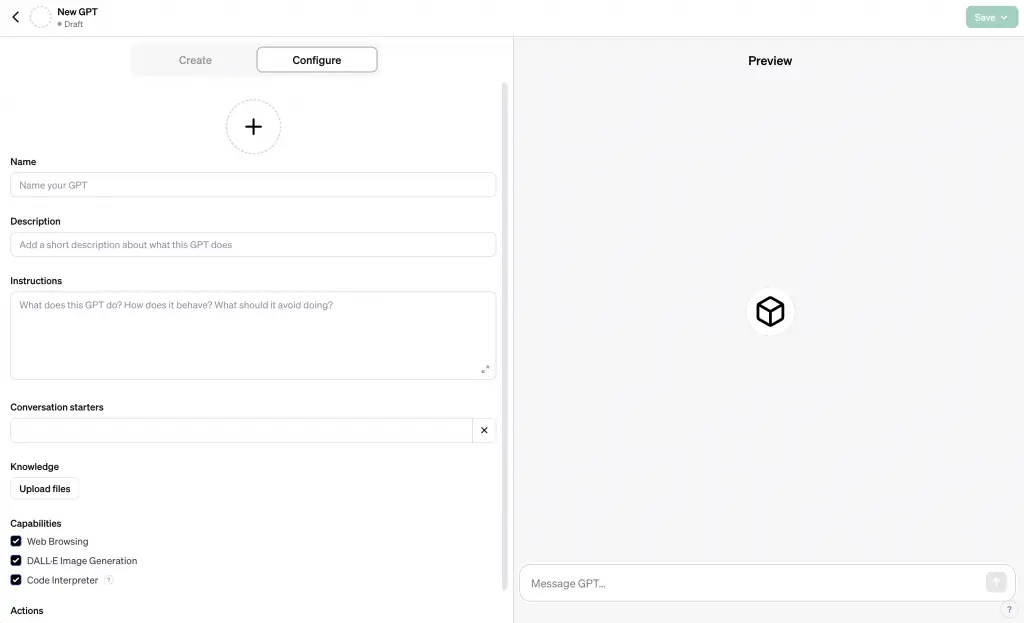In the ever-evolving landscape of marketing, brands are constantly seeking innovative ways to connect with their audience and amplify their message.
As artificial intelligence (AI) continues to revolutionize various industries, ChatGPT, a powerful language model developed by OpenAI, has emerged as a game-changer for marketing teams. With its ability to generate human-quality text, ChatGPT has the potential to transform the way brands create and distribute content, personalize customer interactions, and enhance overall marketing strategies.
To harness the power of ChatGPT for marketing purposes, brands can leverage custom GPTs, specifically tailored versions of ChatGPT designed to address their unique needs. By providing custom GPTs with relevant training data and specific instructions, marketers can empower these AI-powered assistants to generate creative ad copy, craft engaging social media posts, develop personalized email campaigns, and even write persuasive sales pitches.
This article delves into the world of Custom GPTs, providing a comprehensive guide for marketers to create and utilize these AI-powered tools effectively. From defining goals and gathering data to providing feedback and refining performance, the guide outlines a step-by-step approach to building a custom GPT that aligns with a brand’s voice, messaging, and marketing objectives. Additionally, the guide offers a collection of prompt suggestions to guide marketers in interacting with the GPT builder and ensuring the custom GPT is trained to produce high-quality, on-brand marketing materials.
As marketers embrace the power of Custom GPTs, they can unleash a new era of personalized, data-driven, and AI-enhanced marketing campaigns, fostering deeper connections with their audience and achieving greater success in the digital realm.

Follow These 7 Steps To Create You Marketing Custom GPT.
Step 1: Define Your Goals and Purpose
Before embarking on the GPT creation journey, it’s crucial to clearly define your goals and purpose. What specific marketing tasks do you want the GPT to assist with? Do you envision it generating ad copy, crafting social media posts, or perhaps developing personalized email campaigns? Having clear objectives will guide the training process and ensure the GPT aligns with your marketing objectives.
Step 2: Gather Brand Data and Content
The GPT’s ability to understand and reflect your brand voice depends on the quality and relevance of the data it’s trained on. Collect a comprehensive set of brand materials, including your website content, blog posts, social media posts, advertising campaigns, and any other marketing materials that embody your brand’s tone, style, and messaging.
Step 3: Access ChatGPT Plus or Enterprise
To create custom GPTs, you’ll need an active ChatGPT Plus or Enterprise subscription. These premium tiers provide access to the GPT builder, which allows you to customize and train the GPT model.

Step 4: Create a Project and Select GPT
Log into your ChatGPT account and navigate to the GPT builder. Click on “Create a GPT” to initiate the project. Under the “Select GPT” section, choose “Custom GPT” and give your GPT a descriptive name, such as “Marketing GPT” or “Brand Voice GPT.”

Step 5: Provide Instructions and Train the GPT
The GPT builder provides a text box where you can interact with the GPT and guide its training. Start by providing a brief overview of your brand, its mission, values, and target audience. Then, introduce the GPT to your brand’s voice and style by sharing examples of your marketing materials. This can be done by uploading any brand specific documents you may have.

Next, provide specific instructions for the tasks you want the GPT to perform. For instance, if you want it to generate ad copy, provide examples of successful ad campaigns and explain the elements that make them effective. Similarly, if you want it to develop social media posts, provide examples of engaging and on-brand social media content.
As you interact with the GPT, continue providing feedback and refining its responses. The more examples and instructions you provide, the better the GPT will learn to emulate your brand’s voice and style.
Prompt Suggestions
Emphasize brand voice and messaging:
Provide the GPT with a comprehensive brand style guide that outlines the brand’s personality, tone, and preferred language.
Share examples of successful marketing materials that exemplify the brand’s voice and messaging.
Instruct the GPT to adopt the brand’s voice and style in all generated content.
Target specific marketing goals:
Clearly define the specific marketing goals you want the GPT to assist with, such as increasing brand awareness, driving website traffic, or generating leads.
Provide the GPT with examples of successful marketing campaigns that achieved similar goals.
Instruct the GPT to tailor its content and strategies towards achieving the specified marketing goals.
Tailor prompts for specific marketing channels:
When providing prompts for ad copy, specify the target platform (e.g., Facebook, Twitter, Instagram) and the desired ad format (e.g., image, video, text).
For social media post creation, instruct the GPT to consider the platform’s audience demographics, content preferences, and engagement patterns.
When generating email campaign content, provide the GPT with details about the target audience, email segmentation criteria, and the desired call-to-action.
Encourage creativity and innovation:
Provide the GPT with open-ended prompts that encourage creative thinking and unconventional approaches.
Ask the GPT to explore new ideas, concepts, and storytelling techniques for marketing campaigns.
Allow the GPT to experiment with different writing styles and formats to find the most effective approach for each task.
Refine and improve the GPT’s performance:
Regularly evaluate the GPT’s generated content and provide feedback on its adherence to brand voice, messaging, and overall effectiveness.
If the GPT produces content that is inconsistent or ineffective, provide additional examples and instructions to guide its learning.
Continuously update the GPT’s training data with new marketing materials, industry trends, and evolving brand guidelines.
By incorporating these prompt suggestions and actively engaging in the GPT’s training process, marketers can empower their custom GPT to become an invaluable tool for creating innovative, on-brand, and goal-oriented marketing campaigns.

Step 6: Test and Refine the GPT
Once you’re satisfied with the GPT’s performance, put it to the test by asking it to generate marketing materials for different purposes. Evaluate its ability to adhere to your brand’s voice, style, and messaging. If necessary, provide additional feedback and refine the GPT’s training data.
Step 7: Integrate the GPT into Your Marketing Workflow
Once you have a well-trained GPT, integrate it into your marketing workflow. Use it to generate ideas, draft content, and personalize marketing messages. Continuously monitor its performance and provide feedback to ensure it remains aligned with your brand’s evolution.
As reference see out guide to the 21 Best Marketing Custom GPTs so far.
In Conclusion
Remember, the key to creating a successful ChatGPT marketing custom GPT is to provide clear instructions, relevant training data, and consistent feedback. With careful planning and execution, you can empower your marketing team with an AI-powered assistant that can enhance your brand’s voice and amplify your marketing efforts.